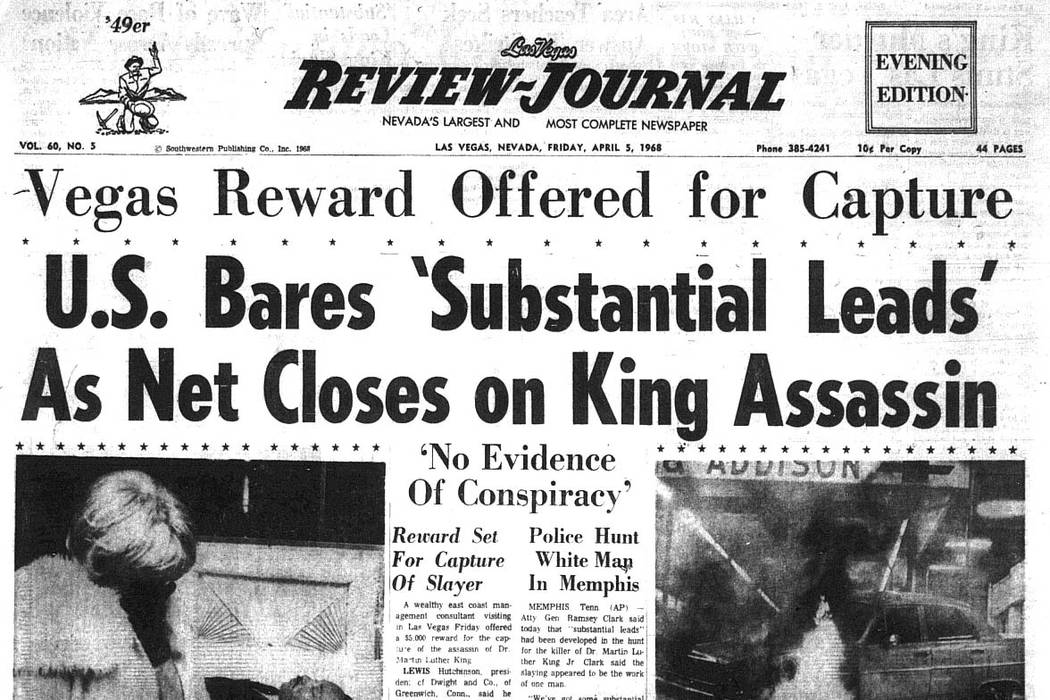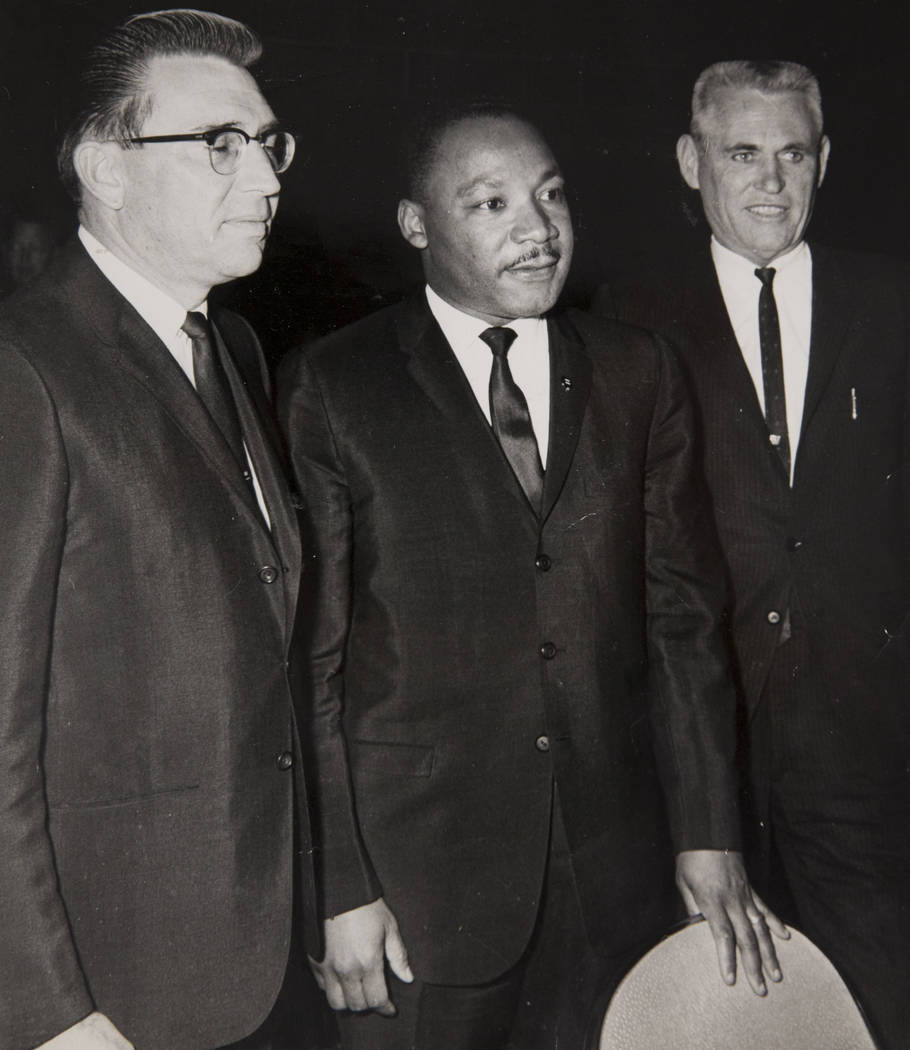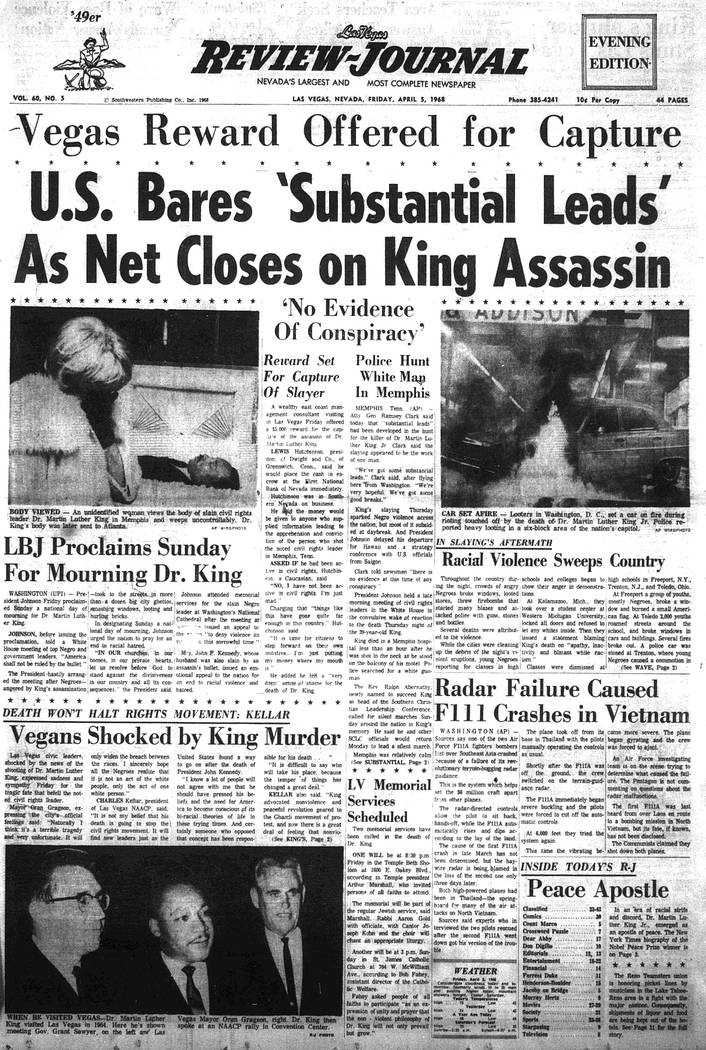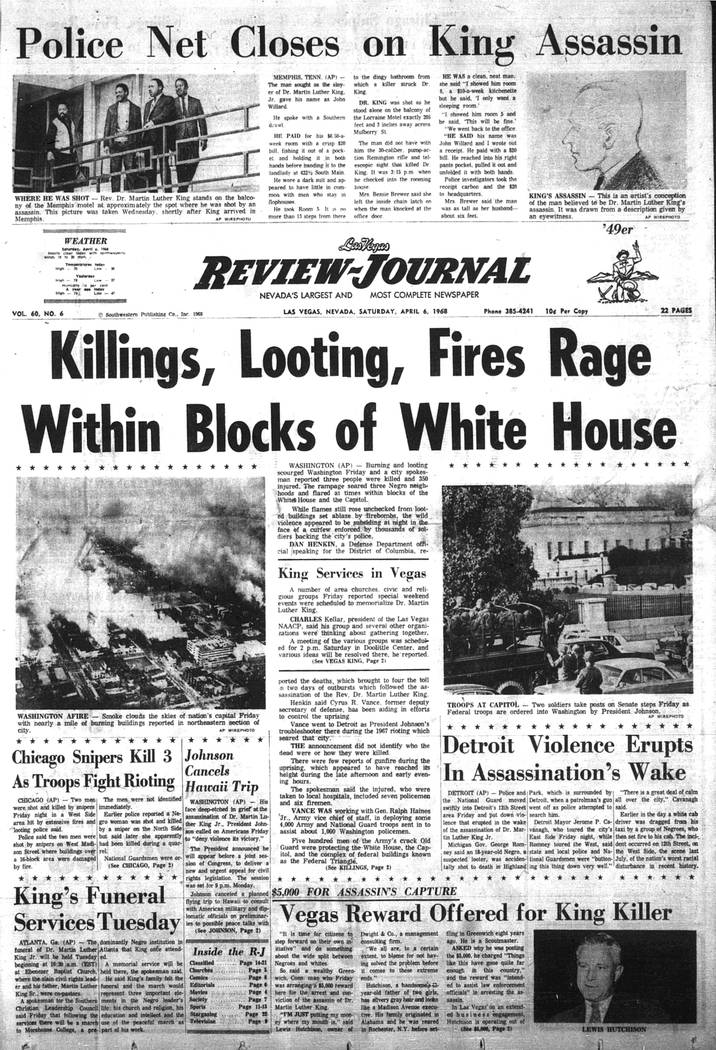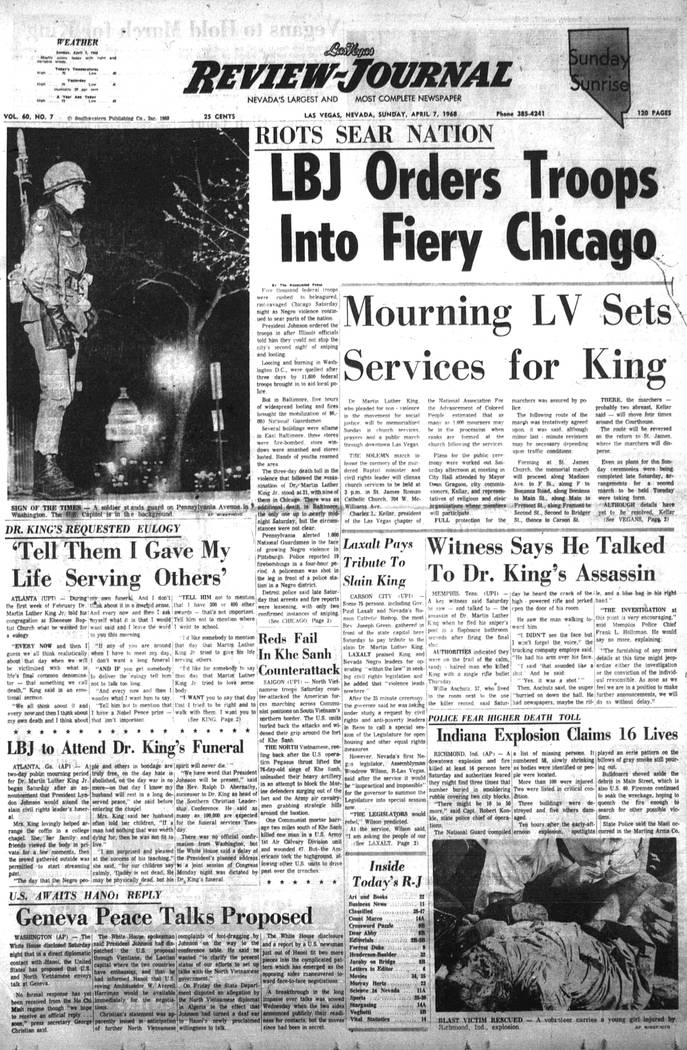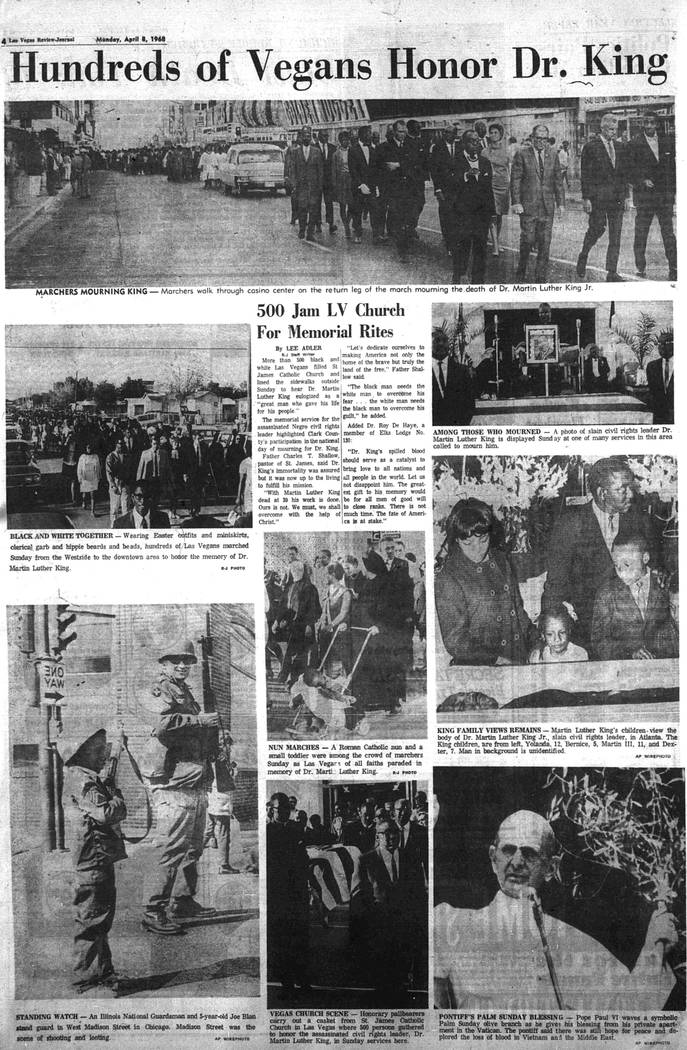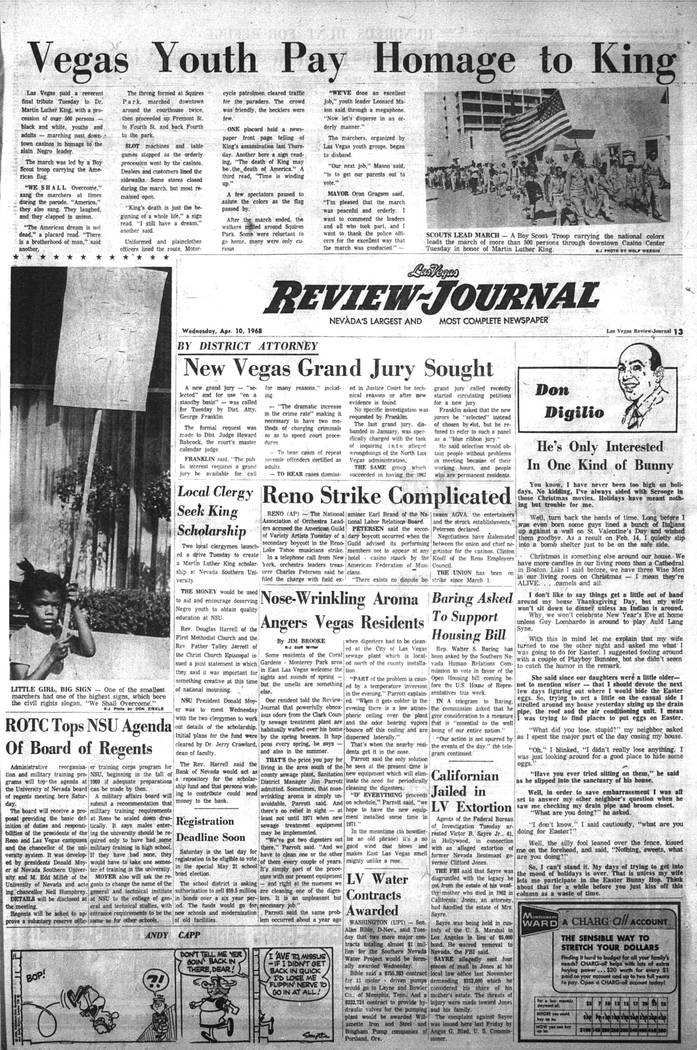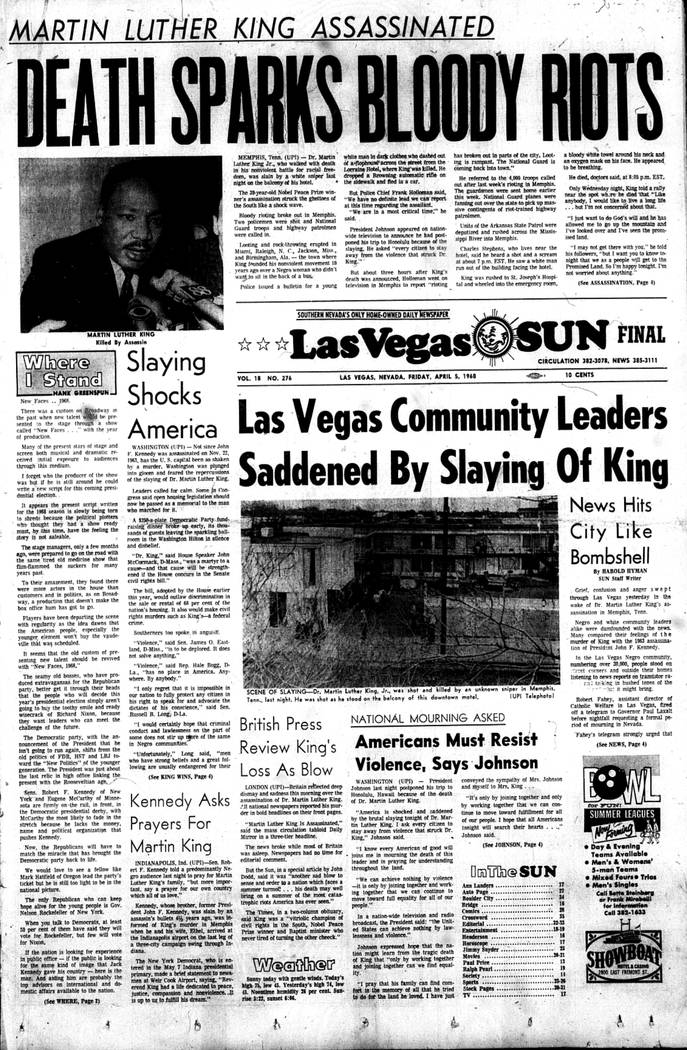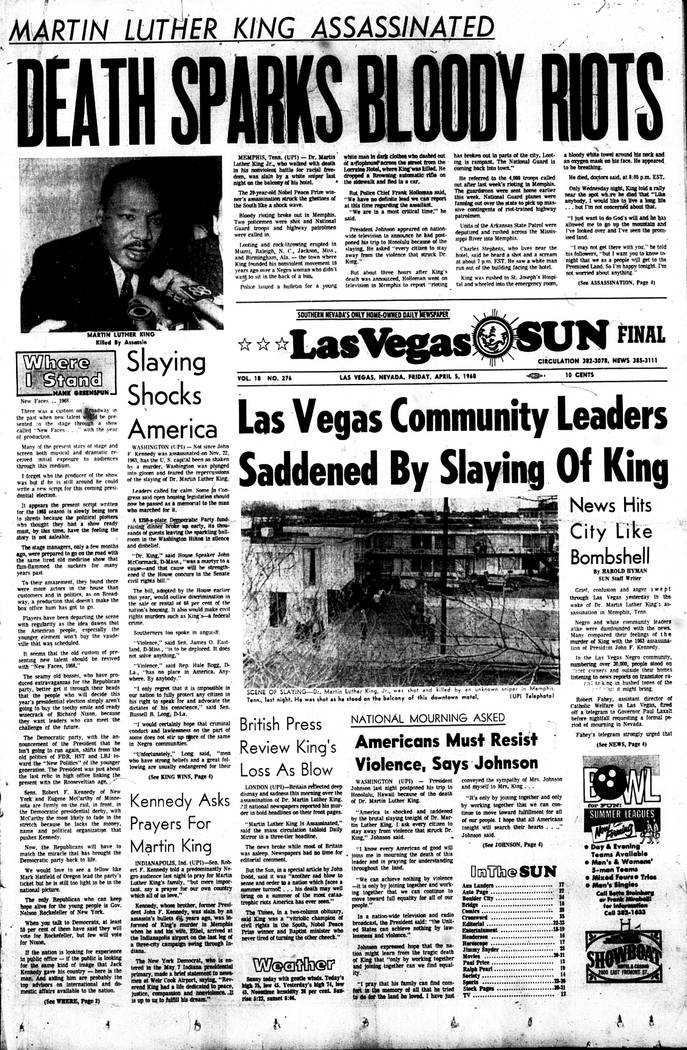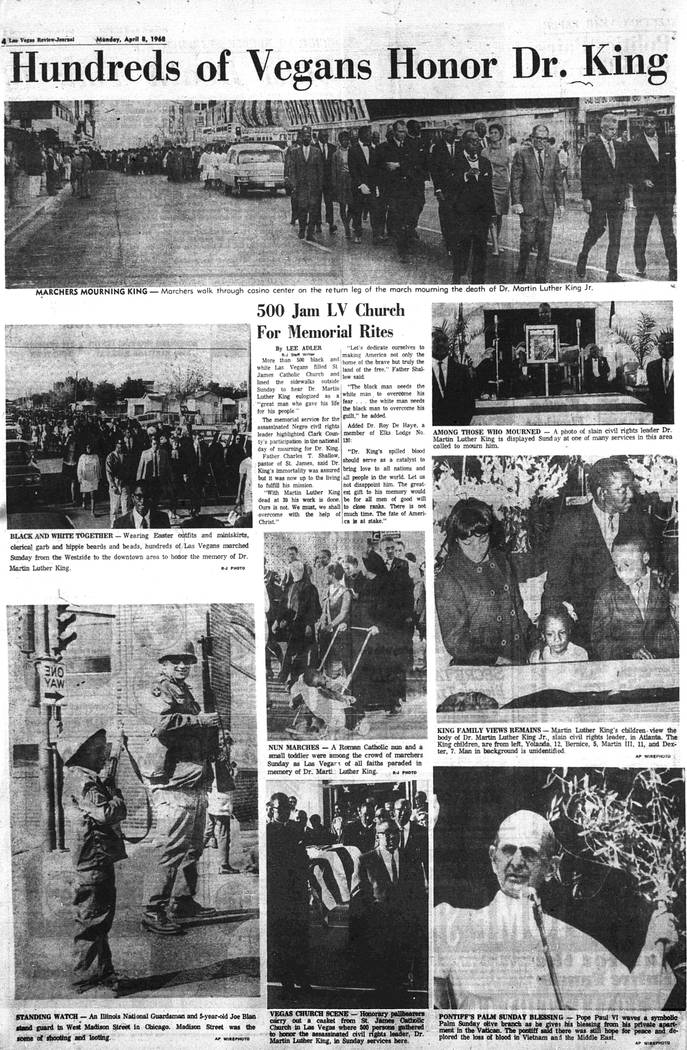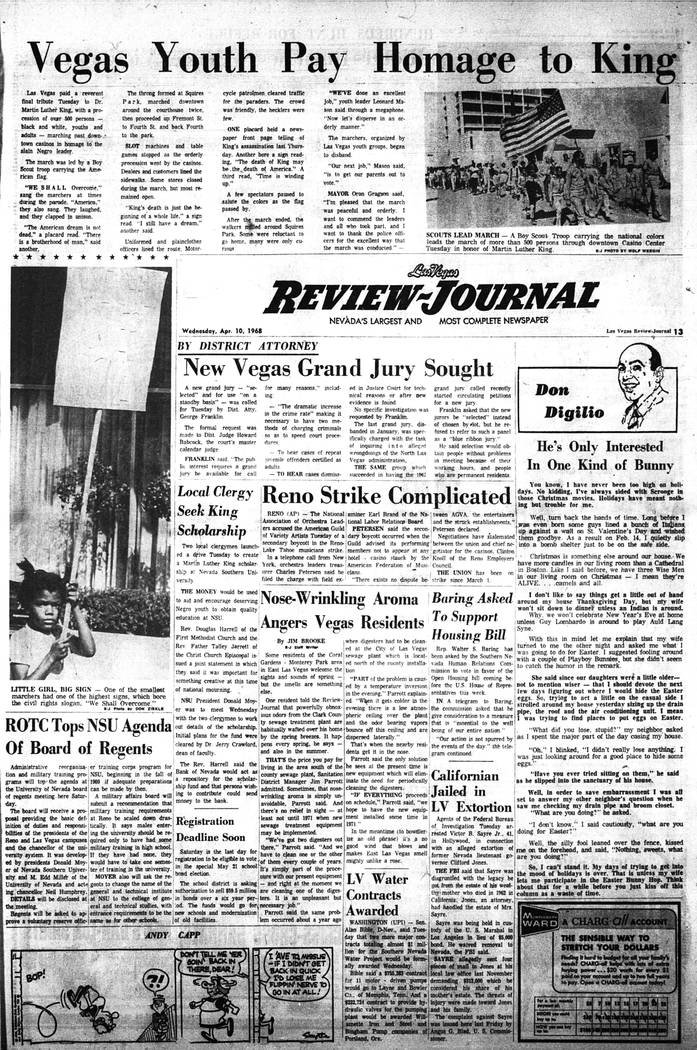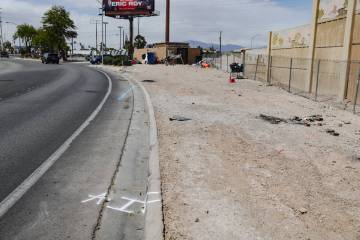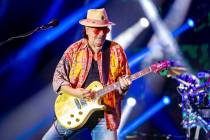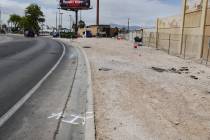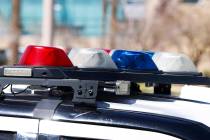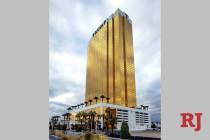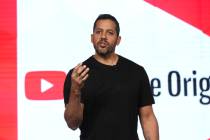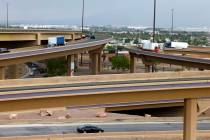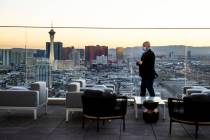Newspapers from 1968 preserve shock, sorrow of MLK’s murder
Expressions of sorrow and pleas for calm filled the April 5, 1968, edition of the Las Vegas Review-Journal.
By then, most valley residents already knew about the murder of Martin Luther King Jr., so the evening paper’s banner headline focused on the hunt for his assassin.
Page 1 also included reactions from local civic leaders and a story about a wealthy Connecticut businessman who posted a $5,000 reward at a Las Vegas bank for information on King’s killer.
The front of that morning’s Las Vegas Sun screamed: “Martin Luther King assassinated; Death sparks bloody riots.”
Cranford Crawford doesn’t remember the headlines from 50 years ago, but he certainly remembers the mood in the community.
He helped organize the second of two peaceful downtown processions that paid tribute to King in the days following his murder in Memphis.
“There was a lot of tension. People were fearful, anxious and confused,” said Crawford, then the youth adviser for the NAACP in Las Vegas. “I think the marches helped quell some of that.”
Peaceful and ‘all positive’
While the Review-Journal carried wire service accounts of violent clashes in other cities, there were no reports of local rioting.
About a thousand people joined the first march on Sunday, April 7, which began at the Second Baptist Church in west Las Vegas and capped the city’s participation in the national day of mourning for King.
Crawford said the youth march two days later was assembled by two local high school boys who borrowed his car to recruit other students from around the valley. The event was planned and the participants carefully selected to ensure a gathering in keeping with King’s vision: “peaceful and respectful and all positive,” said Crawford, now 78 and living in North Las Vegas.
The downtown youth march began and ended at what used to be Squires Park at the southwest corner of Las Vegas Boulevard and Bonanza Road. According to the April 10 edition of the Review-Journal, casino dealers and their customers came outside to watch the procession as it moved down Fremont Street.
“Uniformed and plainclothes officers lined the route. Motorcycle patrolmen cleared traffic for the paraders. The crowd was friendly, the hecklers were few,” the newspaper said.
At the end of the event, organizers urged the young marchers to disperse as quickly as possible, “before they came up with ideas about what they should do next,” Crawford said. “We didn’t want any of that.”
Newsprint time capsule
King’s murder and its fallout would dominate the headlines for days to come.
The news filled Lewis Hutchinson with so much “shock and shame,” he decided to deposit $5,000 at the First National Bank in Las Vegas as a reward for King’s killer.
“There ought to be a million dollars on his head,” the Greenwich, Connecticut, management consultant told the Review-Journal in an April 5, 1968, report. “I’m just putting my money where my mouth is. We all are, to a certain extent, to blame for not having solved the problem before it comes to these extreme ends.”
On the page next to Hutchinson’s story, the newspaper printed a lengthy piece from the New York Times News Service headlined “Martin Luther King, Apostle of Peace.”
Much of the rest of the Review-Journal read like it might have on any other day in 1968. There were advertisements for $4.88 Easter dresses at Montgomery Ward and $2,433 Fleetside pickup trucks at Fletcher Jones Chevrolet.
The Silver Slipper downtown was promoting its burlesque show and its 59-cent breakfast. A small ad from the law firm of R. Ian Ross, Jerome F. Snyder and Oscar B. Goodman announced the addition of a new partner: a former Clark County public defender by the name of Richard Bryan.
The movie listings featured such new releases as “Bonnie and Clyde” at the Skyway Drive-In on Boulder Highway, “The Good, the Bad and the Ugly” at the Red Rock Theatre on Charleston Boulevard and “The Graduate” at the Guild downtown. The top showroom acts slated to perform that weekend included Tom Jones at the Flamingo, Little Richard at the Aladdin, Buddy Hackett at the Sahara and Jim Nabors at the Frontier.
Words to live by
But King’s death did find its way into other sections of the paper that day. The business section carried a short wire story about how the stock market weathered the assassination, while the sports pages led with news of several Major League Baseball teams postponing their season openers in deference to King.
The Review-Journal opinion page made no mention of the slain Nobel Peace Prize recipient on April 5. That would come two days later, with the publication of an unusual editorial in the Sunday paper.
It’s actually a reprint of an opinion piece the newspaper published April 30, 1964, a few days after King spoke in Las Vegas for the first and last time. It opens with a single line from King’s speech, 16 words rendered suddenly and shockingly prophetic: “If a man hasn’t discovered something he will die for, he is not fit to live.”
Contact Henry Brean at hbrean @reviewjournal.com or 702-383-0350. Follow @RefriedBrean on Twitter.
Editorial excerpt
The following is an excerpt from a Review-Journal editorial published on April 30, 1964, following Martin Luther King Jr.'s only speaking engagement in Las Vegas. The newspaper reprinted the editorial on April 7, 1968, following King's death:
"If a man hasn't discovered something he will die for, he is not fit to live."
Dr. Martin Luther King said that, in Las Vegas. He said it calmly and without hate. And he spoke from the kind of experience which testifies that he was neither bragging nor taking lightly the possibility that he might die for his cause.
As a leader of one of America's most explosive social revolutions, Dr. King has faced death many times. He has been beaten and jailed and more recently called a "Communist."
Still he is able to speak without hate. He speaks calmly like a man who is not himself involved. But he is not detached. Dr. King appears to be devoid of hate for his oppressors, but he is not dispassionate.
The amazingly articulate minister spoke of love as a creative thing, as a thing which involved understanding and good will. He spoke of the weakness of men … not just white men or black men … but weak men.
"Destructive means cannot bring about constructive ends," King said.



